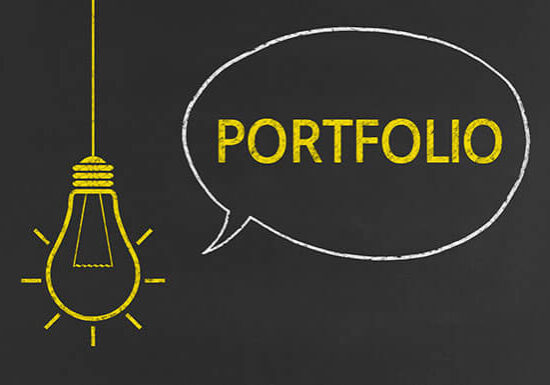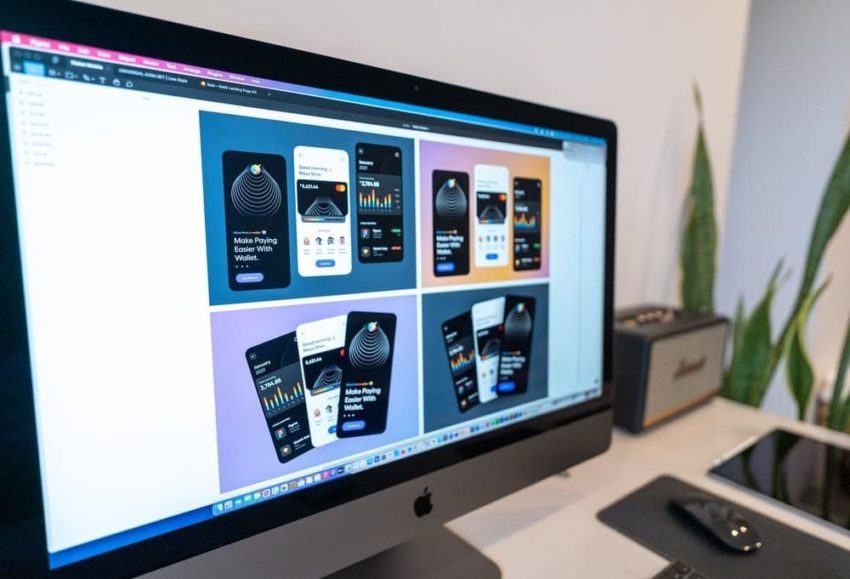How To Make A Portfolio That Stands Out?
Updated: June 19, 2024
Published: July 6, 2021

When entering the job market, you’ve likely been used to being asked for a resume and/or CV. In some fields, a portfolio can be the most important determinant for whether or not you get an interview or the job. That’s why we’re covering how to make a portfolio.
Once you are through reading this article, you should be well-equipped and ready to be on your way to creating a stand-out portfolio of your own.

What is a Creative Portfolio?
A creative portfolio is a collection of your work that showcases your abilities, thought processes, and creativity. The way you choose to present a portfolio will depend on the type of work you’re showing. For example, portfolios can be displayed online, in print, or as a show-reel.
While you’ll want to include your best projects, it’s also important to strategically think about what work you are displaying. The portfolio as a whole should feel aesthetically cohesive and be visually appealing, all the while depicting a variety of projects.
Who Should Have a Portfolio?
Portfolios prove to be a must-have for the following careers:
- Videographers
- Architects
- Graphic designers
- Photographers
- Web developers
- Writers
- Artists
- Advertisers
As you can see, portfolios are generally needed for artistic and creative fields. That being said, there are ways to showcase portfolios for job titles that aren’t entirely visual. For example, consider these types of portfolios:
- Case studies
- Lab reports
- Research
- Certifications
How to Make a Portfolio
If you’re at that point in life where you want to get started on your own portfolio (it’s never too early or too late), then you’ll want to take a few things into consideration.
Follow these steps to help create a portfolio that is sure to be a head turner:
1. Target your audience
Choosing how to communicate a message, idea, or which pieces of work to showcase all relies on your audience. When creating a portfolio, consider the type of employers you’ll be trying to impress. Thoughtfully approach the curation process so that you will answer their biggest questions and be able to display how you will help them specifically.
2. Think about presentation
Your portfolio itself is an example of your work. Think about how you select between multiple products in the aisle of a store. What catches your eye? Chances are product packaging plays a big role in your decisions, whether it’s subconscious or conscious. Similarly, how you choose to present your work could make or break your chances. It’s an opportunity to be creative.
For example, if you’re submitting your work to apply for a videographer role for a sports network, then mimic a “Top 5 Best Plays” format for your work.
In terms of placement, put your best pieces in the beginning and end (the book-end approach). This allows you to start off strong and also whatever comes last tends to be the most remembered.
3. Be meticulous
You won’t get nicked for providing more details than less. It’s important that your prospective employer can understand the scope of the project and task at hand. That’s why it’s useful to be meticulous about adding the ins-and-outs of each piece you include.
Include answers to questions like:
- Did you create this piece alone or with a team?
- What was the client’s goal?
- How did you achieve the goal?
4. Select your strongest pieces
One of the most challenging aspects of creating a portfolio is deciding what to include. It’s recommended to select at least 5 pieces of work. If you’re creating a showreel, try not to go over the 2-minute mark.
Your prospective employers are filtering through a handful of potential candidates, so you never want to overdo it. The biggest lesson to remember here is: quality over quantity. You can also always lean on people you trust to receive their feedback.

How to Create a Portfolio (Online)
These days, it’s very common for portfolios to exist online. There’s a bevy of platforms that you can use to create your own. From drag-and-drop user interface platforms like Squarespace or Wix, creating your online portfolio has never been easier.
To get started, here’s what you’ll need to do:
Create a website
A personal website is a major piece of your brand identity (your brand being yourself). Having a website allows you to show some of your personality, network effectively, and even be found by those in need of the service you provide.
Start by selecting the platform you’ll use. Depending on which platform you use, you may or may not need to buy a third-party hosting plan. Once you have established your website domain (URL), you’ll be one step closer to going live.
Pick a theme or build
Either pick from existing themes or use code to customize your website’s layout and design.
Curate your work
Pick your pieces and get to uploading. Take time to choose the work you want to display. The great thing about having a website is that you can always add or subtract (or even just modify) what you put out.
Elements to Include
Regardless of the type of portfolio you create (online, print, reel, etc.), there are some key ingredients you’ll want to include.
It’s as easy as 1, 2, 3:
- A little background information
- Your work/process/results
- Contact information
Curate, Create, and Conquer
Think of a portfolio like you do a photo album. It contains pieces of your past and present that are emblematic of stories. These stories explain what you’ve done, where you’ve been, and how you approached a certain moment in your life.
When curating your own portfolio, you want to be able to showcase your strongest pieces while providing a well-rounded picture of what you’re capable of achieving. This will give your future and potential employer a quick but meaningful look into how you work and what you will bring to the table.
Having a portfolio doesn’t render a resume useless and vice versa. For many positions, you’ll submit both. Your portfolio offers insight into your process and execution. Your resume shares where you’ve worked (experience) and the education you’ve earned. Combined, you can present a full picture of why you’re the prime candidate for the position you’re applying to obtain.
